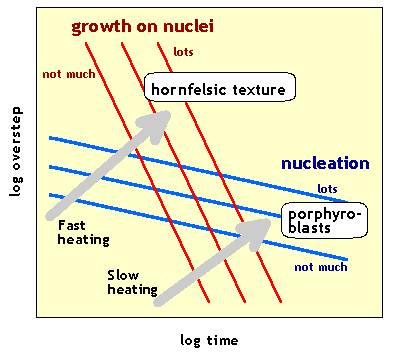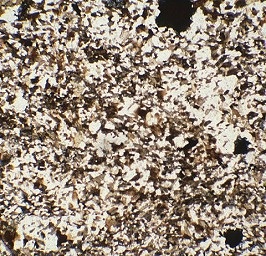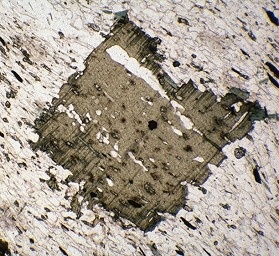Microstructures of Metamorphic Rocks
Interplay of nucleation and growth, and the origin of porphyroblasts
A completed reaction produces an amount of product which is fixed by the bulk chemical composition of the rock. The microstructure, however, will depend on the relative rates of nucleation and growth. Easy nucleation combined with slow growth produces many small grains; difficult nucleation with relatively fast growth leads to few large grains of product. For a given mineral forming by a given reaction, the heating rate is also an important factor.

Growth rates show an approximately linear relationship with overstepping, so that the amount of product grown depends more-or-less equally on the overstepping and the time available for growth. The nucleation rate, on the other hand, is extremely sensitive to overstepping, and much less sensitive to the time scale.
Compare two cases:
1. Fast heating in a contact metamorphic aureoleNucleation begins, but before much growth can occur, the temperature rises further, allowing plentiful nucleation throughout the rock. Result: a fine-grained hornfels. |
|
2. Slow heating in regional metamorphismNucleation begins at the most favourable sites. The temperature increase is so slow that there is plenty of time to complete the reaction by growth on relatively few nuclei. Result: a porphyroblastic rock. |
|

